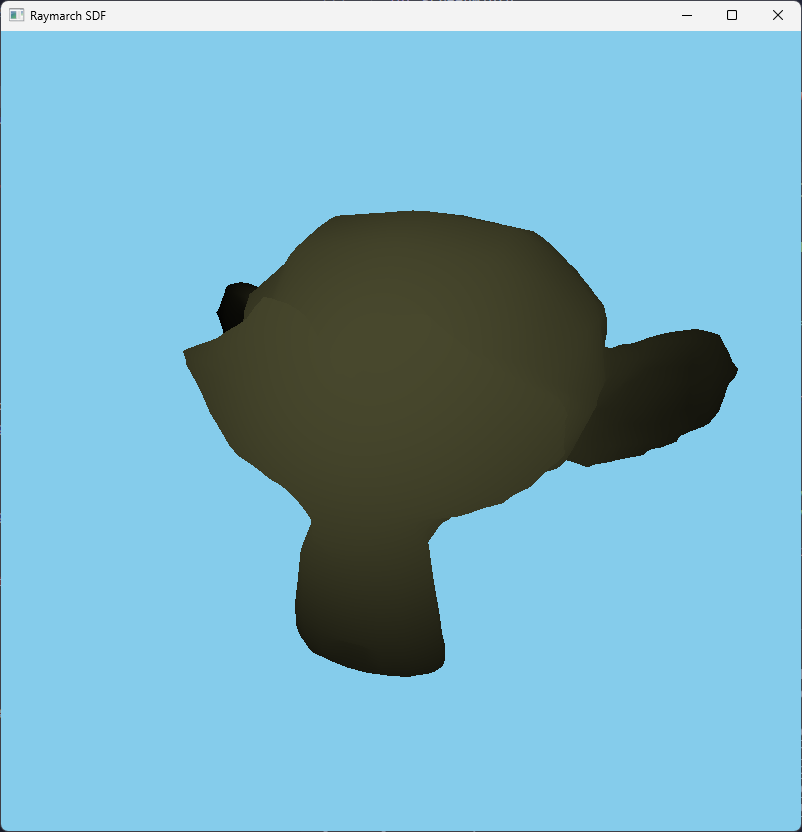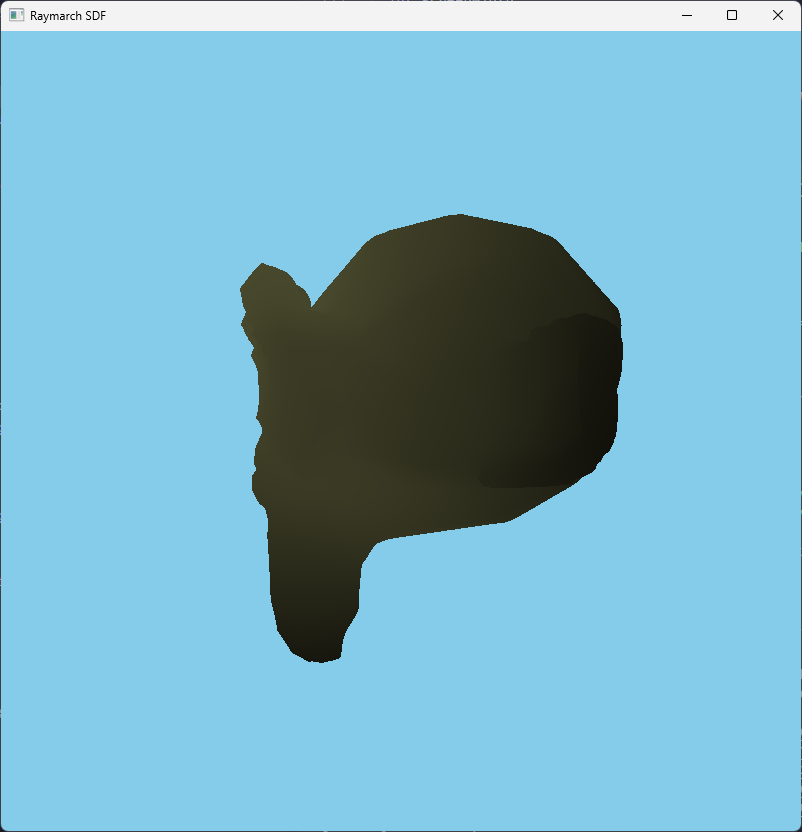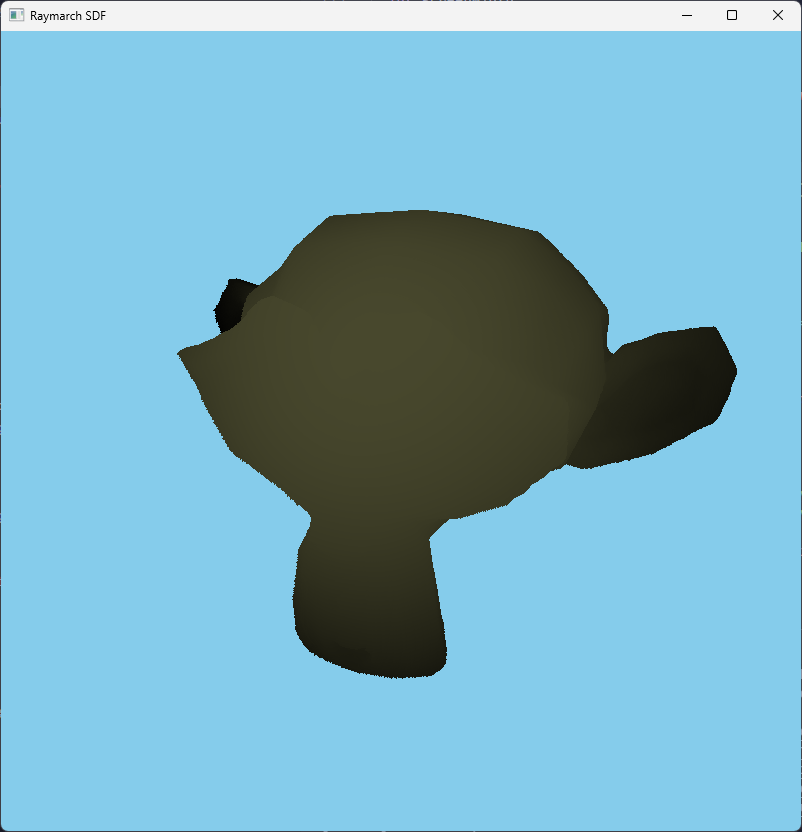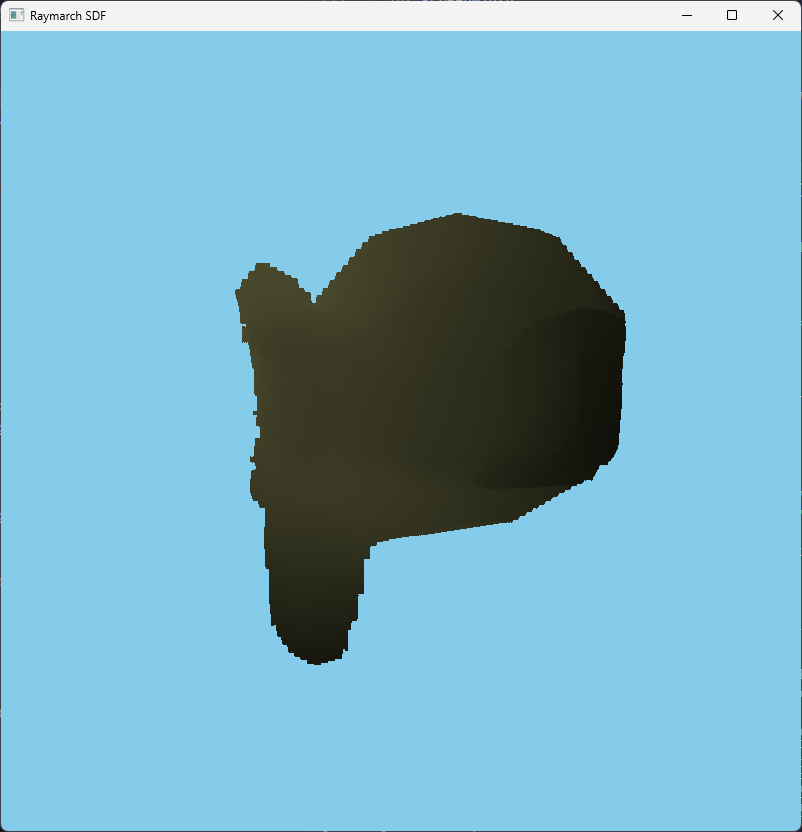Packing 3D SDF to a 2D Texture
A week ago, I managed to generate SDF textures for some arbritary model using compute shader. However passing a lot of 3D textures to the shader is not that easy, especially if we have many objects later in our scene.
I thought of an idea in order to streamline multiple 3D SDFs. That is to pack the 3D texture to a 2D texture such as (64x64x64) to (4096x64). The steps will be such as:
- Generate on compute shader the 3D Texture that contains the distance information
- Dump the 3d texture data on the CPU side and do the following mapping (calculate 2D X,Y from 3D x,y,z):
- X: x + z*64. This means maximum SDF resolution on X axis is 64.
- Y: y
- Add another offset angle on the Y axis in order to pass multiple data, so we use 4096x4096 texture to store multiple sdf information. On the texture, every 4096x64 is reserved for 1 sdf model and is tracked with such a struct:
1
2
3
4
5
6
7
8
9
10
11
12
13
14
15
struct PackedSdfOffsetDetail {
mat4 modelMat;
mat4 invModelMat;
vec4 innerBBMin;
vec4 innerBBMax;
vec4 outerBBMin;
vec4 outerBBMax;
int atlasIndex;
int atlasOffset;
};
layout (std430, binding = 0) buffer PackedSdfOffsetDetailBuffer {
int offsetSize;
PackedSdfOffsetDetail offsets[];
};
- Then we can write a function that receives a position in the world coord + some SDF offset information and spits back the 2d texture coord.
1 2 3 4 5 6 7 8 9 10 11 12 13 14 15 16 17 18
vec2 ConvertWorldToTexture(vec3 worldPos, vec3 boxMin, vec3 boxSize, int atlasOffset) { float textureWidth = 4096; float textureHeight = 4096; int cubeCount = 64; vec3 texturePos3D = (worldPos - boxMin) / (boxSize / vec3(cubeCount)); float x = texturePos3D.x; float y = texturePos3D.y; float z = floor(texturePos3D.z); vec2 texturePos2D = vec2( (x / textureWidth) + (z * 64.0 / textureWidth), (y / textureHeight) + (atlasOffset * 64.0 / textureHeight) // Y coordinate ); return texturePos2D; }
- We can then raymarch it like usual.
Result:
- Overall it’s close enough.
- However, the 2D texture is quite blocky when raymarched and viewed from the side. This is because on the Z axis, we can no longer rely on OpenGL’s default GL_LINEAR distance interpolation when we are sampling the texture. We can do this manually but I will let it be for now.



